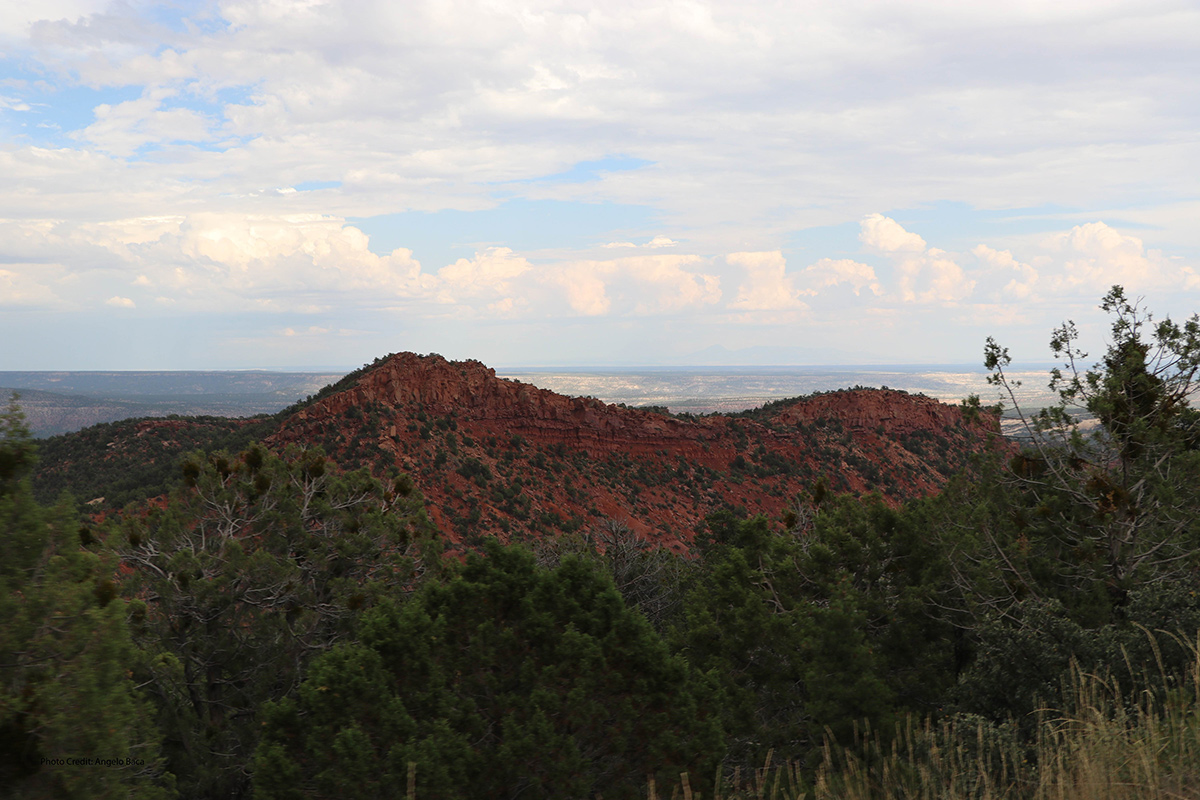Rising from the center of the southeastern Utah landscape and visible from every direction are twin buttes so distinctive that in each of the native languages of the region their name is the same: Hoon’Naqvut, Shash Jaa’, Kwiyagatu Nukavachi, Ansh An Lashokdiwe, or “Bears Ears.”
—Excerpt from Bears Ears National Monument Presidential Proclamation (2016)
What’s in a name?
It’s an important part of our identity, our existence, connecting us to the cultural and social realms we come from. So when President Barack Obama declared Bears Ears a national monument in 2016, he respectfully acknowledged that this sacred place in the state of Utah was shared and honored in different traditions, citing the original names in Hopi, Zuni, Ute, and Diné languages.
Naming who you are and where you come from is essential to Indigenous communities. It connects you to a family, a lineage, maybe even a clan or community. It makes your relationships and friendships part of a larger social and cultural system of kinship, or what we call in Navajo K’é, which means that we are never alone.

Our relationships with our families and to people in our communities, region, and environment are intertwined with the lands that we come from. Even now, our names and identification, in some way, are bound to the lands. Indigenous epistemology positions us in a universe larger and more complex than any of us can completely understand by ourselves, but it is a process of accumulating traditional knowledge from Native communities over generations, all over the world.
How did four tribes separately arrive at the name “Bears Ears”? It’s possible one group influenced their Indigenous neighbors, but early Zuni and Hopi inhabitants, as Pueblo peoples who were first in this place, had their name for it in their own language. Ute and Navajos came into the territories a little later and gave it their own names. There are periods of habitation, migration, and transition through the region. In different times, in different languages, the result is the same: Bears Ears is not just a place but an identification of the spirit and energy of the personhood of the animal and relative we know as the bear.
The bear is a sacred animal in many Indigenous cultures. It is affiliated with medicine because, as an omnivore, and much like a human being, it understands the medicinal ways of both plants and animals. It is our close relative whom we respect.
I named my short documentary film Shash Jaa’: Bears Ears, using the Diné term from own Navajo perspective. It poses a challenge to those who want everything to be easily digestible in a Western framework—and in English. They momentarily stumble, and eventually succeed, in saying the name of the film. Personally, it is very satisfying to hear people who have never spoken Diné make the effort to learn a word or two. These are rare moments for Indigenous scholars, filmmakers, and artists that we relish.
I believe that naming the film with my primary Indigenous language gives it the weight it deserves. If any other Indigenous filmmaker from the region makes a film about the Bears Ears movement to pursue a national monument designation, I hope they will use its name in their own language too. It would mean more and be culturally significant to acknowledge that place in a proper and respectful way.
Imagine if the area was given a generic English settler-colonial name, like Hole-in-the-Rock. The power of naming would be subsumed by the larger American Manifest Destiny narrative of “discovering” and colonizing the West. Our Indigenous naming practices long predate this Western attempt to cut the landscape up into neat demarcated boxes, a “God’s-eye-view” method of mapping. It has raised jurisdiction issues of this sacred space between Utah, Colorado, Arizona, and New Mexico in this “Four Corners” region, where such imagined border lines originally had no bearing on the sharing or naming of the place.

When colonialists first arrived on the continent, they established places with names like New London, New Hampshire, and New York, tying themselves back to the “motherland.” Others, in an effort to depart from European conventions, adopted Indigenous place names. “Manhattan” was taken from Manahatta, or the “Hilly Island” of Lenape territory. “Seattle” was named after Chief Sealth of Duwamish territory. Even “Utah” is believed to originate from the Ute, meaning “people of the mountains.” The country named places after Indigenous peoples, drawing power from them, as it simultaneously attempted to erase their presence and render them invisible.
Naming a sacred place without the involvement and input of the people who originally deemed it sacred does not honor them or give them adequate recognition. It is appropriating that name for the dominant group’s own ends. When the current administration renamed the Bears Ears region Shash Jaa National Monument, they didn’t consult with us about the decision. This name is reserved for use by the Diné (meaning “The People” of the Navajo Nation). It is a divisive tactic, one that all the five tribes of the Bears Ears Inter-Tribal Coalition recognizes will not work.
In the petition for the designation, the tribes called it Bears Ears National Monument in solidarity and unity, not privileging any one tribe or their names, but sharing and respecting each other’s language, heritage, history, and traditions.

Angelo Baca is a cultural activist, scholar, filmmaker and currently a doctoral student in anthropology at New York University. He is the cultural resources coordinator atUtah Diné Bikéyah, a nonprofit organization dedicated to the defense and protection of culturally significant ancestral lands. The National Parks Conservation Association recently designated him as one of “10 Under 40” dynamic cultural activists who make up the association’s Next Generation Advisory Council. He has published a widely read op-ed in the New York Times.
Shash Jaa’: Bears Ears is Angelo Baca’s latest award-winning film about the five tribes of the Bears Ears Inter-Tribal Coalition that worked together to protect 1.9 million acres of Utah wilderness through a national monument designation.


